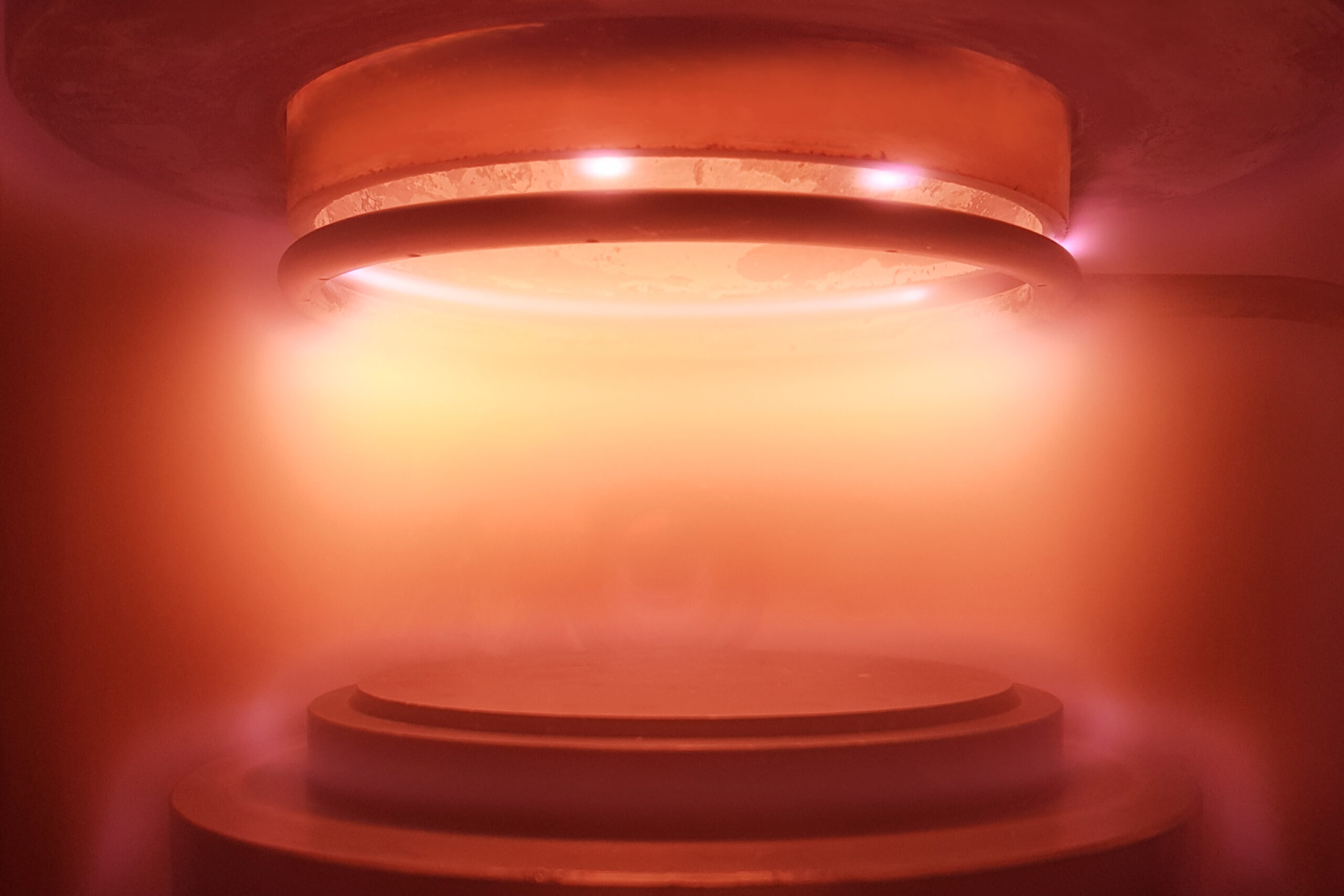Systems for Plasma Research

Plasma treatment of surfaces allows for a substrates surface characteristics to be modified by the treatment by an ionised species. Hiden’s specialised mass and energy analysers allow for direct measurement of plasma species, giving the researcher an insight into the fundamental parameters of plasma processes. Measurement of characteristic ions, neutrals and radicals is possible.
Related Products
Plasma treatment can be separated into two broad application types, etching and deposition. Plasma etching is the removal of material removal from a surface via a plasma process, involving either charged species (ions), neutral or radical species. Typical applications include material compatibility modification, surface treatment of polymers, and plasma etching for semiconductors. Plasma deposition encompasses various vapor deposition techniques that make use of plasma to deposit a source material onto a substrate surface. Such techniques are commonly used to enhance surface properties such as hardness, chemical resistance, and adhesion; or to impart specific optical or electronic properties.
Specialised techniques, such as High-power impulse magnetron sputtering, HiPIMS, allow for modification of the conventional magnetron sputtering techniques to allow more energetic ions to reach the surface without substrate damage. In HIPIMS, a sequence of short, intense, pulses are delivered to the cathode, with a peak power in the range of kW to MW. This creates and extremely dense plasma locally to the cathode. Pulses are applied with a low duty cycle, typically in the region of 10-100 µs, keeping heat, as well as average operating power relatively low compared to a DC process. HIPIMS plasmas are highly ionised, and the high proportion of plasma generated ions give increases in surface density, lower friction and reduce substrate temperature. Enhancements in time resolved mass and energy spectroscopy have allowed for HiPIMS species to be transiently analysed, with a time resolution to 50 ns. Thus enabling researchers to measure plasma ignition, sputtering, deposition and afterglow, throughout a pulse cycle.
Take a look at the wealth of customer research, application data and product literature below.
ECR – Electron Cyclic Resonance
Electron Cyclotron Resonance plasma is used for chemical vapour deposition, CVD and etching in semiconductor processing. Magnetic shielding of the EQP and PSM Mass/Energy Analyser enables operation in the high magnetic field environment produced by the ECR plasma source. EQP Mass and energy analyser for plasma diagnostics PSM Series Advanced Plasma Sampling Mass Spectrometers
Magnetron Sputtering
Magnetron sputtering is for plasma vapour deposition and is available in DC and RF forms producing a range of thin films used in many industries including decorative coatings, hard disk drive platters , optoelectronics and solar cells.
High Power Impulse Magnetron Sputtering (HIPIMS)
Pulsed plasma provide high density plasma for adhesion enhancing pre-treatment of the substrate prior to coating deposition (substrate etching) and deposition of thin films with high microstructure density. Hiden’s data acquisition system provides for time resolved data acquisition across the plasma pulse providing mass resolved ion energy information for positive and negative ions.
Inductively Coupled Plasma (ICP) and RF Plasma
ICP and RF plasma are used for many applications including reactive ion etching of thin films. Hiden’s advanced Langmuir probe system, ESPion includes RF compensation circuits to enable operation and data collection from within the plasma RF environment. ESPion Advanced langmuir probe for plasma diagnostics.
Dielectric Barrier Discharge (DBD)
DBD plasma sources are widely used for surface modification at atmospheric plasma. Hiden’s HPR-60 molecular beam sampling system provides for mass and enrgy analysis of plasma ions, neutra
Atmospheric Plasma Analysis by Molecular Beam MS – GEC 2004 (1.38 MB)
Atmospheric Pressure Plasma Analysis by Modulated Molecular Beam MS – ICPIG 2005 (256 KB)
Ion Energy Distributions for a DC Plasma – GEC 2003 (250 KB)
Mass Analysis of CF3I Decomposition in a Surface Barrier Discharge – GEC 2011 (2.8 MB)
Mass Spectroscopy of Metastable Species during Plasma Processing – GEC 2011 (2.1 MB)
Time Resolved Ionisation Studies of HIPIMS – PSE 2006 (848 KB)
Description of HiPIMS plasma regimes in terms of composition, spoke formation and deposition rate
The behaviour of Cu and Cr HiPIMS (high power impulse magnetron sputtering) discharges was investigated by a combination of optical emission spectroscopy, energy-resolved mass spectrometry and optical imaging, for the complete current–voltage characteristic range achievable within our experimental conditions. Inflection points typical of HiPIMS current–voltage characteristics separate plasma regimes perfectly differentiated in terms of flux composition of species towards the substrate, deposition rate, and the nature of plasma self-organization. The reorganization of the HiPIMS plasma into spokes (areas of high ionization over the target) is associated to one regime of high plasma conductivity, where also deposition rate is limited. This spoke-dominated regime can be substituted by a homogeneous regime at higher powers, where there is an increase of deposition rate, which is driven mostly by an increase in the flux of metal neutrals and metal double-charged ions. The relevance of secondary electron emission mechanisms for the support of the spoke-dominated regime in reactive and non-reactive sputtering conditions is discussed.
Teresa de los Arcos, Raphael Schroder, Yolanda Aranda Gonzalvo, Volker Schulz-von der Gathen and Jorg Winter (Published 25 September 2014)
Online at: http://stacks.iop.org/0963-0252/23/054008

